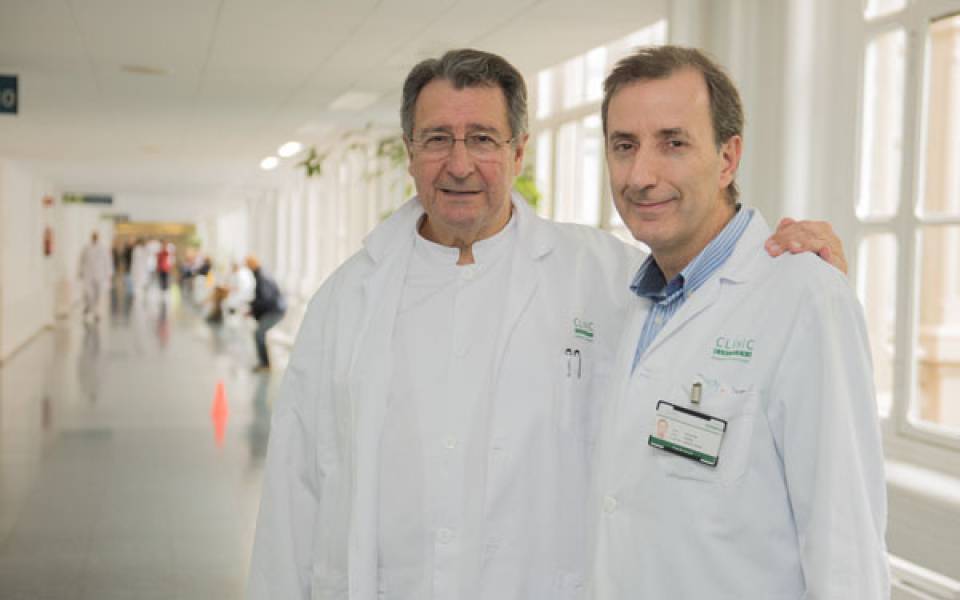Excessive low-density lipoprotein (LDL) may cause its incrustation in the arteries, resulting in lesions called atheromas. The accumulation of these lesions are the cause of coronary heart disease, the most common type of heart disease. When the arterial obstruction is located in the left main coronary artery, which is the gateway of the bloodstream to the entire ventricle, it has been considered, so far, that the best way to treat the affected person was to submit it to a surgery. The technique used is the coronary-artery bypass grafting (CABG), which consists of creating new paths from healthy stretches of veins or arteries in order to get the blood to continue reaching the heart.
The study, recently published in the medical journal New England , is focused on the patients suffering from mild or moderate coronary heart disease, in particular those whom the left main coronary artery is affected, and therefore the obstruction is located at a key point for the blood distribution to all the arterial territories of the heart. The study have found that three-year survival is the same in those affected which have been treated with stents than in those who have been operated to make a bypass.
To reach these conclusions the study recruited 1,905 people with mild or moderate coronary disease, those with high complexity were excluded. There have been involved 126 hospitals and the Clinic has been the sixth in the world in recruited patients, which were divided into two groups. When comparing them, in addition to checking that there were no significant differences at three years, it was observed that during the first thirty days the rates of stroke, myocardial infarction, arrhythmias, hemorrhage or (obviously) graft occlusion were higher in patients who underwent surgery. However, as Dr. Pomar recalls, "further follow-up is needed since other previous studies have shown a higher incidence of cardiac events and the need for new procedures for greater recurrence of angina in non-surgical patients".
"A benefit for patients"
According to Dr. Sabaté, "the importance of this study is the benefit that will provide for the patients". Indeed, for those with high surgical risk and with less complex stem lesions, stents are an effective treatment, something that has not been proven to date. In this way, patients can avoid a more invasive operation, which entails intubation, a more complex postoperative period and a longer recovery. "In short," says Dr. Sabaté, "patients who will not have to go through the bypass could return to work in 3-5 days, and we have seen that by age three they could be just as well as if we had operated them. Furthermore, this could reduce surgery waiting lists". However, "today", says Dr. Pomar, "the decision between surgery and the stent should be individualized and within a multidisciplinary team of a center of excellence".
Article Reference:
Everolimus-Eluting Stents or Bypass Surgery for Left Main Coronary Artery Disease
Gregg W. Stone, M.D., Joseph F. Sabik, M.D., Patrick W. Serruys, M.D., Ph.D., Charles A. Simonton, M.D., Philippe Généreux, M.D., John Puskas, M.D., David E. Kandzari, M.D., Marie-Claude Morice, M.D., Nicholas Lembo, M.D., W. Morris Brown, III, M.D., David P. Taggart, M.D., Adrian Banning, M.D., Béla Merkely, M.D., Ferenc Horkay, M.D., Piet W. Boonstra, M.D., Ad J. van Boven, M.D., Imre Ungi, M.D., Gabor Bogáts, M.D., Samer Mansour, M.D., Nicolas Noiseux, M.D., Manel Sabaté, M.D., José Pomar, M.D., Mark Hickey, M.D., Anthony Gershlick, M.D., Pawel Buszman, M.D., Andrzej Bochenek, M.D., Erick Schampaert, M.D., Pierre Pagé, M.D., Ovidiu Dressler, M.D., Ioanna Kosmidou, M.D., Roxana Mehran, M.D., Stuart J. Pocock, Ph.D., and A. Pieter Kappetein, M.D., Ph.D., for the EXCEL Trial Investigators
The New England Journal of Medicine, October 31, 2016 DOI: 10.1056/NEJMoa1610227

